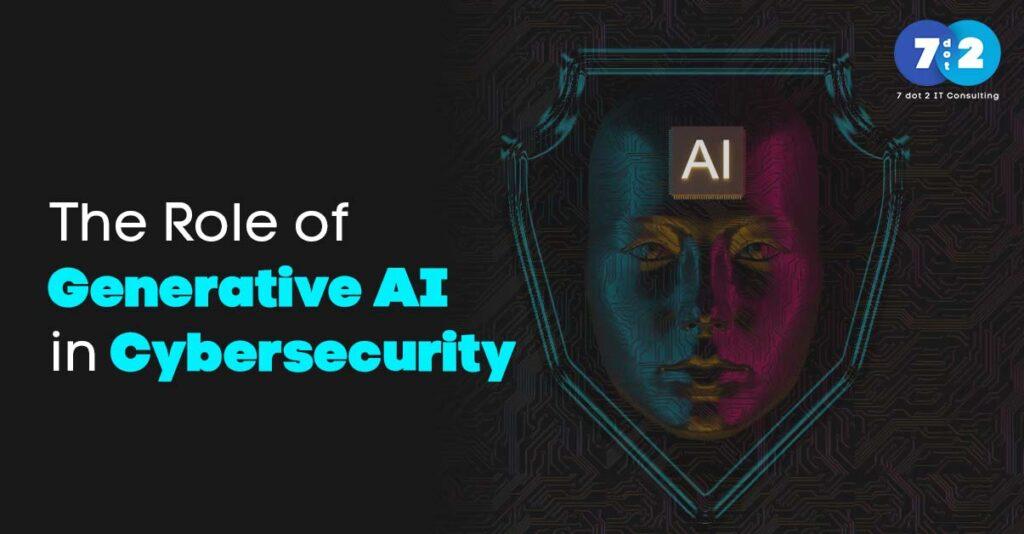The Role of Generative AI In Cybersecurity
Posted on : 16 November 2024 at 10:31 am, by Puneet Aggarwal, Founder 7 dot 2 IT Consulting

In today’s interconnected world, cybersecurity is a major concern for individuals and businesses alike. As cyber threats become more sophisticated and more complex, traditional security solutions have failed to provide the security at all possible levels. This is where generative AI comes in, providing a visionary approach to cyber security. Generative AI is a subset of artificial intelligence, which is very complex, and it is difficult to predict the future of the system.
Understanding Generative AI
Generative AI algorithms are a category of algorithms where every new data is generated. Traditional AI models are inherently artificial, requiring AI to generate and process data from predefined rules and input, such as text, images, and other objects. Generative AI is a powerful tool for generating new data, which has novel applications in cybersecurity.
One of the most popular techniques for using generative AI is GANs. GANs consist of two neural networks, a generator and a discriminator, which operate as a single agent. The generated data is evaluated. Despite this negative process, GANs are highly realistic and produce accurate data, which can be used for cybersecurity purposes.
Proactive Threat Detection
Generative AI in cybersecurity is not a passive role model. Traditional security paradigms are based on pre-defined patterns and patterns of behavior. However, there is no such thing as a passive and unintended threat. Second, generative AI can simulate and predict potential cyber threats, and it is a powerful tool for the defense industry.
Generative AI models can be used to model cyber threats from large amounts of data, program security forces to predict attacks, and then use them to identify and exploit attackers. There is evidence that active perspective groups are strong and have a strong security presence.
Malware detection is a major threat to cybersecurity. Malware is a type of malicious software that has evolved over time and is a challenge due to its evolving nature. Generative AI research aims to improve the naming of malware.
By identifying different and more realistic malware patterns, generative AI malware detection is also improving the narrative and effectiveness of malware detection. Name the security team, which we have and have seen as a proven malware researcher. From this perspective, it is only a matter of time before the threat of a negative event occurs.
Enhancing Malware Detection
Incident response is an important aspect of cyber security, which includes the identification, prevention and response of incidents. Generative AI can automate a wide range of incident responses, including the speed and phase of the incident.
Cyber Deception and Honeypots
Cyber fraud is a type of technology that is used by attackers to create a digital copy of the system for the purpose of hacking. Honeypots, a type of cyber deception tool, are decoy systems designed to attract and trap attackers. Generative AI can enhance the effectiveness of honeypots by creating realistic decoy environments.
To generate real data and systems, generative AI is a reliable honeypot environment that can be used to copy real-world networks and applications. These hackers are highly sensitive to the interaction between the real and fake systems, which is why it is valuable to detect potential threats
Ethical Considerations and Challenges
While generative AI has a great potential for cybersecurity, there are also moral dilemmas that are currently prevalent. The basic idea is that generative AI can be misused for malicious purposes.
Cybercriminals have used generative AI to create sophisticated phishing emails, deepfake videos, and unfair deception.
To address these challenges, it is essential to establish ethical guidelines and regulations for the use of generative AI in cybersecurity. Collaboration between AI researchers, cybersecurity experts, and policymakers is crucial to ensure that generative AI is used responsibly and ethically.
Conclusion
Generative AI is proving to be crucial in the realm of cybersecurity and other digital domains. Its capabilities, including threat detection and automated responses, enhance its significance in this era of technological progress. As we transition toward a world driven by complex processes and algorithms, there will be a growing need for such revolutionary tools or problem solvers to ensure our daily activities are both secure and error-free.
At 7dot2 IT Consulting, we are dedicated to discovering optimal technology-based solutions that address contemporary needs while leveraging new advancements in technology.
